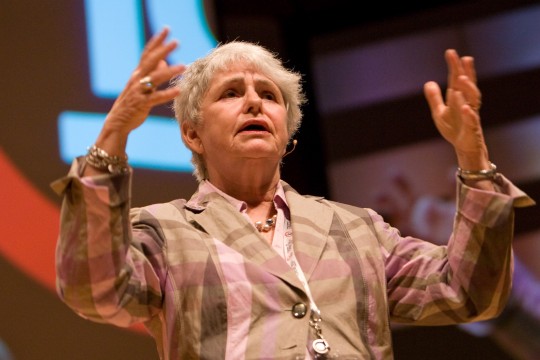Can a nation have its culture and eat it too? That, it seems to me, is the question at the heart of the debate over the confusing Charter of Quebec Values.
As many commentators — including revered elder sovereigntist statesmen Jacques Parizeau and Lucien Bouchard — have pointed out, retaining the conspicuous wall-hung crucifix in the legislature of the National Assembly, while proscribing “conspicuous” religious symbols in the giving and getting of civic services for hoi polloi, rightly invites ridicule and censure from outsiders.
Heritage! It is our cultural heritage, Mme. Marois and her minions insist, and deserving of this reverential gesture.
But this supposed explanation is no explanation at all. The crucifix represents Catholicism’s foundational raison d’être. It is the religion that shaped Quebec’s distinct culture. It represents its own charter of values, so to speak, most of which were rejected out of hand in the Quiet Revolution. Catholicism is no longer the religion practised by most Quebecers. So the crucifix’s continued presence amongst these particular Quebec politicians is not motivated by reverence. Au contraire.
Non-Catholics find the retention of the crucifix offensive because of the hypocrisy it illuminates in a government Charter promoting religious neutrality everywhere but in its own home. But practising Catholics should be doubly offended. For this heritage religion is held in extreme disrespect, one might even say contempt, by many members of Quebec’s political and chattering classes. The decision to keep the crucifix was a sop to aging francophone nationalists with lingering nostalgia for pre-diversity days. So it is there, but trivialized, as though it were any quaint cultural antique, like a pine butter churn or a birchbark canoe.
Paradoxically, banishment of the crucifix altogether, or relegation to some invisible space, would indicate respect for Catholicism as a force to be reckoned with, a potential threat to secularism’s authority over Quebecers’ hearts and minds. Reduced to a cultural memento, however, it now only represents Catholicism’s impotence, its utter extinction as a potential rival to state secularism.
For revolutionaries, no personal or private attachment is immune from political manipulation. The Charter’s demand for uniformity of appearance is simply a logical extension of a decades-long imposition of the collectivist Quebec social model for politically correct citizenship. Before uniformity of appearance there was uniformity in language, then uniformity of thought regarding belief systems other than those dictated by the government.
Uniformity of thought — or cultural relativism — is being achieved through Quebec’s Ethics and Religious Education program (ERC), since 2009 obligatory K-12 in schools public and private — a program conceived and executed by the Liberal party, also sympathetic to imposed secularism.
ERC is actually the pedagogic forerunner to the Charter of Quebec Values. While the charter literally strips people of signs of religious devotion, ERC attempts to strip children of inner signs of loyalty to the religion of their parents, by teaching the spiritual equivalence of all religions, including Wicca and Raëlism.
(If practising Catholics, Muslims, Sikhs and Orthodox Jews had properly grasped ERC’s subversive objectives, they might not have waited for the proposed values charter to demonstrate in the streets.)
Religion is not like language. Everyone has a mother tongue, but few people are averse to learning other languages. People do not feel conflicted or disloyal speaking second or third languages for commercial or social reasons. Therefore, even when language laws are unfair, they are far easier to impose than laws that impinge on religious beliefs and customs.
But when you tell people, in the name of “neutrality,” to remove symbols they and most Canadians regard as socially harmless, like turbans, hijabs, crosses and kippahs — face cover is socially harmful; it is a case apart — which they see as outward manifestations of inner devotion to God, religious people do feel torn and conflicted.
Even if the Marois government had bowed to the principle of consistency and removed the crucifix, it would still be clear that this government does not understand — it has forgotten — that for religious people, cultural “heritage” is something more than a themed wall plaque. It is a more deeply-felt part of one’s identity than any state-dictated idea could ever be.
Loyalty to people is concrete. Loyalty to an abstract state ideology will, for the religiously observant, inevitably result in disloyalty to kinsmen whose good opinion of them matters far more than that of Mme. Marois.
Historically speaking, when states tell people they must choose between loyalty to a state religion and the religion of their fathers and mothers, it generally doesn’t end well.
Barbara Kay: Quebec’s token bow to its Catholic past



























Laissez un commentaire Votre adresse courriel ne sera pas publiée.
Veuillez vous connecter afin de laisser un commentaire.
Aucun commentaire trouvé